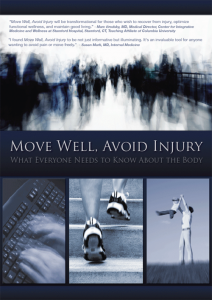I have recently had a surgical procedure to release a bad trigger finger condition on the middle finger of my right hand which I previously discussed in my post titled ‘Trigger Finger and RSI?‘. The problem is also accurately summarised with diagrams on this page about trigger finger.
Trigger finger is where a finger in a gripping position appears to lock in place. When you pull the finger open, it unlocks with a click (or in my case a loud ‘clunk’ which made anyone around me squirm!), hence the name trigger finger. The condition is caused by a nodule growth on the tendon which gets stuck on the pulley (sheath) system that is there to guide/hold the tendon in place. Doctors have minimal knowledge about why this nodule forms. Nodules on tendons can come and go on their own, but this one has been bad and persistent.
The build up to the operation had certainly been playing on my mind for several months. Unsurprisingly the mental prospect of the surgery was the worst part since the operation itself was only 15min in duration and was carried out under local anaesthetic (although I avoided the temptation to watch it!).
The procedure itself involved cutting open the sheath(pulley) that was causing the tendon restriction to occur, which freed the movement of the tendon (and nodule). The surgical entry point was on the palm of the hand just below the finger, and the incision itself was only about 1 inch long.
Recovery time has been fast. I am now nearly 3 weeks post op, the stitches are out , and the skin on the scar has fully healed over. I still have joint stiffness, and a bit of swelling which causes my finger to stiffen up in the bent position, but I expect this to gradually subside over time, especially after I keep stretching it like I have been instructed to do by the physiotherapists.
It is too early to do a complete assessment of the experience, but I can say that it’s great not having an annoying triggering finger condition any longer!
I wish there was a simple solution like this to my RSI condition!
UPDATE : 1 month post op
It’s now been about 1 month post operation, and I thought I’d update this post. Although the scar on the plam of the hand is healed over, however I still have a lot of sensitivity about the entrance wound, as well as a lump under the wound. Not sure at this point if the lump is scar tissue or the nodule. The triggering has gone, but I still have a lot of stiffness in the joint, and the finger still likes to stick in the bent position (I have to physically bend it straight with my other hand). Hopefully this is just a result of the swelling and that this will go away on time. I am using the finger, but it can be sore depending on the task at hand.
Update: 2 1/2 months post op
The finger is getting better all the time. It doesn’t stiffen up as frequently as before, but it still can stiffen quite badly and there is no cause I can determine for this. I recently had a follow up with the surgeon, and was advised that post op stiffness is common, and recovery can be as much as 18 months for some individuals – they don’t tell you that before the op! He suggested massaging the joint to reduce the swelling. The scar has totally healed up now, and is a whole lot less sensitive than it was a few weeks ago.
Update: 6 months post op
It’s certainly taken it’s time, but the finger is showing very little stiffness now. I can extend it fully contract it fully, grip things tightly, and have no sign of that horrible triggering any more. I can officially say the op was a success. It does go to show that there is a 3-6 month recovery term for this operation. Good luck with the operation if you are someone who is considering having it done and just factor in a few months for the recovery.
Rate this post! [ratings]
